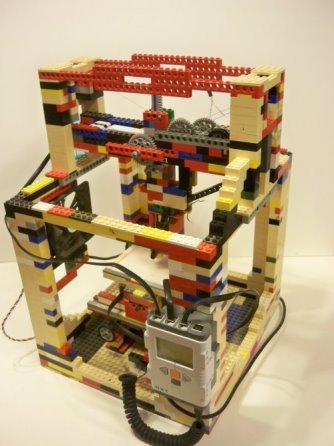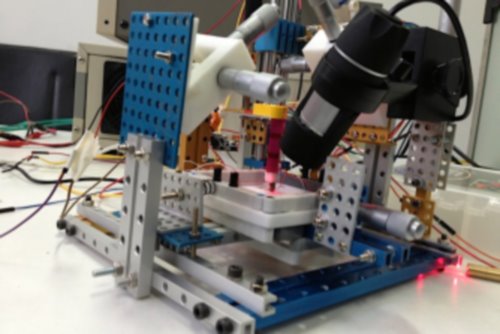So, you’re into technology and you love Legos? Check out these working electronic devices made out of Legos.
Microscope made of Legos

If you thought using a microscope was cool, how about one made solely of Legos.
Lego artist Carl Merriam has been playing with Lego blocks for about 27 years. Now he’s developed a working compound microscope made of just Lego bricks. The microscope uses some convex lenses and power function LEDs.
Its features include the same ones you’d find on an ordinary (and less fun) microscope such as adjustment knobs, an adjustable stage, adjustable magnification, and lights.
Merriam is trying to turn the microscope prototype into an actual Lego set for purchase. Learn more about Merriam’s work.
3D printer made of Legos

An engineering student under the Instructables alias “Mastermind” has developed a fully functional 3D printer made of Legos that he’s calling the “Legobot.” The device prints in hot glue and runs on four power supplies (3-V extruder, 7.2-V for NXT, 12-V fan, and 115 V for the hot glue gun). So far, all of the printer’s moves need to be manually programmed from the NXT programming software, but he’s looking for a g-code interpreter to help with this problem.
“I have included a Lego Digital Designer file with the full printer in it, just about all the technic parts are exactly the same as in my printer, but for the structure I used different parts to speed the digital building process,” Mastermind wrote on Instructables.
See Mastermind’s instructions here.
Nanoscope made of Legos

A group of Ph.D. students from Europe and Asia gathered in Beijing to develop the world’s first low-cost Atomic Force Microscope. Why was it low-cost? Because it was made of Lego blocks, of course.
The students gathered with the task of creating the device that can probe objects that are only a millionth of a millimeter in size. They used Lego blocks, Arduino microcontrollers, 3D-printed parts, and consumer electronics to put it together.
It took just five days for the student team to demonstrate the scanning functionality of their nanoscope.
Learn more about the project.
Advertisement
Learn more about Electronic Products Magazine





